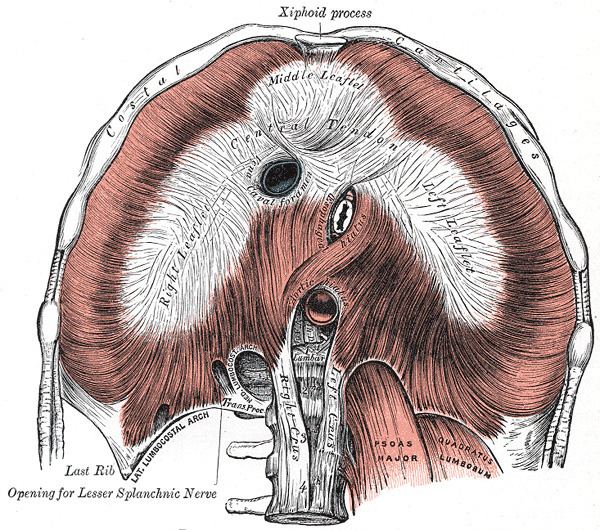Latin Hiatus oesophageus FMA 58289 | TA A04.4.02.011 | |
 | ||
In human anatomy, the esophageal hiatus is a hole in the diaphragm through which the esophagus and the vagus nerve pass. It is located in the right crus, one of the two tendinous structures that connect the diaphragm to the spine. Fibers of the right crus cross one another below the hiatus.
It is located approximately at level of the tenth thoracic vertebra (T10).
The esophageal hiatus is situated in the muscular part of the diaphragm at the level of the tenth thoracic vertebra, and is elliptical in shape. It is placed superior, anterior, and slightly left of the aortic hiatus, and transmits the esophagus, the vagus nerve, the left inferior phrenic vessels, and some small esophageal arteries from left gastric vessels. The right crus of the diaphragm loops around forming a sling around the esophagus. Upon inspiration, this sling would constrict the esophagus, forming an functional (not anatomical) sphincter that prevents stomach contents from refluxing up the esophagus when intra-abdominal pressure rises during inspiration.
